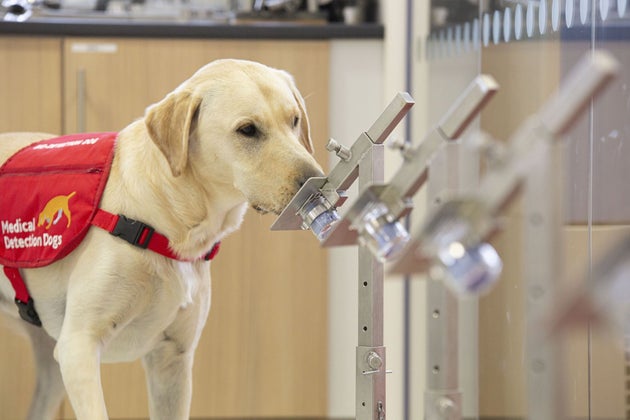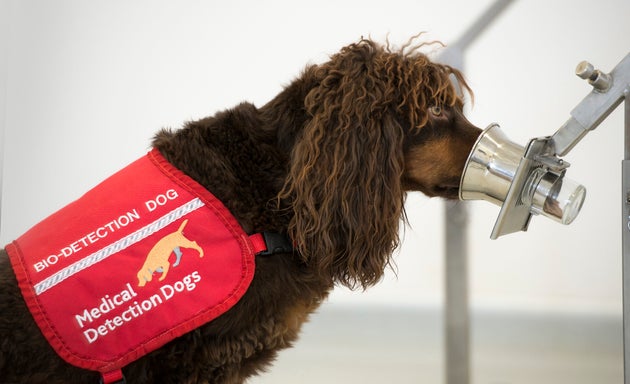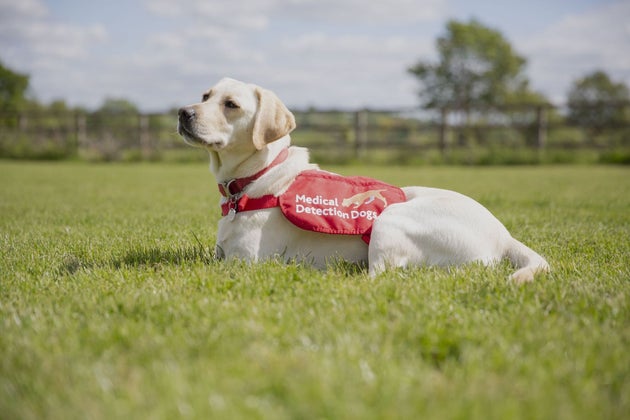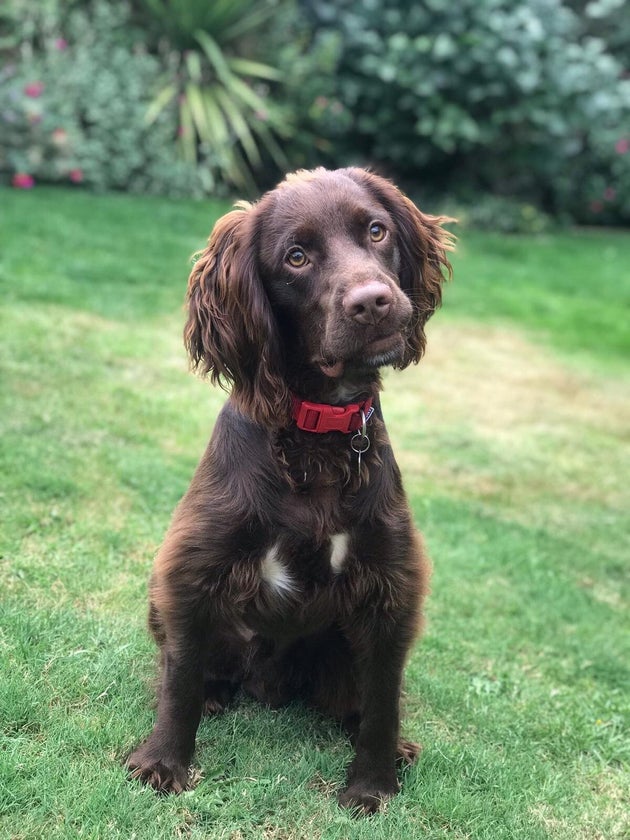These Incredible Dogs Are Being Trained To Sniff Out Covid-19

We’re here to guide you through the coronavirus pandemic. Sign up to the Life newsletter for daily tips, advice, how-tos and escapism.
Storm, Star, Jasper, Digby, Norman, Asher, Kyp and Bramble.
They might sound like characters in an X-Men film – but they’re far more important than that. These names belong to eight dogs being trained to detect Covid-19 by sniffing it out.
The vision is that one day in the future, they (and a team of fellow canines) could be deployed in public places, such as airports and sports stadiums, to identify people who have the virus – including those who don’t show symptoms.
Historically, dogs trained at the Medical Detection Dogs HQ in Milton Keynes have detected a range of diseases including cancer and Parkinson’s. They can do this because of their heightened sense of smell – it’s thought 30% of the dog’s brain is dedicated to analysing odour and the percentage of a dog’s brain devoted to analysing odours is 40 times larger than that of a human.
The Covid-19 detection dogs have been doing initial training to get used to the handlers, the training room and the system. Meanwhile, researchers at the London School of Hygiene & Tropical Medicine are getting ready to collect samples of Covid-19 from NHS hospitals to be distributed to the centre.

By the time the Covid-19 samples arrive on site, the dogs should be ready to detect the virus’ specific smell. They’ll do this by sniffing different samples in the charity’s training room, then indicating when they’ve found a positive Covid-19 sample by sitting down in front of it. There’ll be some tail-wagging, too.
The training method used is reward-based: dogs are given a treat or get to play a game of fetch when they make an accurate assessment, so they feel encouraged to detect it again and again.
The dogs recruited so far are a mixture of spaniels and Labradors – and there’s a reason for this. “All dogs and breeds have the capability to detect cancer, other diseases and crisis situations in humans,” the charity’s CEO and co-founder, Claire Guest, tells HuffPost UK.
“However, because our dogs screen samples on a carousel, we select breeds with a high hunt drive – the kind of dogs that chase a tennis ball 100 times and don’t get bored or tired. Our dogs are chosen according to their ability. It is important they have good noses and love searching and hunting for toys.”
Once the dogs have identified Covid-19 in samples, they’ll begin work on detecting the odour on actual human beings.

It can take six to eight months for a dog to reach a “good” level of performance as a bio-detection dog, says Guest. The eight dogs have already gone through this training.
“The length of time to train a bio-detection dog varies depending on a number of things, such as the odour they are being trained to detect, the sample type they are using, and the dog itself – all dogs learn at different speeds, the same as humans,” she adds.
Once the samples arrive, it’ll take six to eight weeks for them to learn the Covid-19 scent ready to go through to trials, so the centre should have a good understanding of whether the dogs can detect the smell of Covid-19 and to what level of accuracy by then.
The ultimate aim is that the team of detection dogs will be able to screen, without touching, any individual – including those who are asymptomatic – to see if they have the virus. They would then indicate to dog handlers if the person has Covid-19, and the person would need to take a test to confirm they have it. Amazingly, a single dog can screen up to 250 people per hour.
Rapid screening of high numbers of people, even if asymptomatic, will help return our lives back to some sort of normality.

If they’re able to sniff out the virus, it would be a fast, effective and non-invasive testing method, and would make sure actual testing resources are only used where they’re really needed.
Trained dogs could also help assess the prevalence of disease among travellers from specific locations including current ‘hotspots’, says Professor James Logan, head of the department of disease control at London School of Hygiene & Tropical Medicine.
“For example, using detector dogs at airports could help establish that 50% of passengers on a plane from destination A have the virus, whereas only 5% of passengers from destination B do,” he says. “This would provide rapid information of risk and likelihood of rapid spread.”
There are high hopes that the detector dogs could be deployed in under six months.
Prof Logan says that if successful, the trial could “revolutionise” how the virus is diagnosed: “Rapid screening of high numbers of people, even if asymptomatic, will help return our lives back to some sort of normality.”



